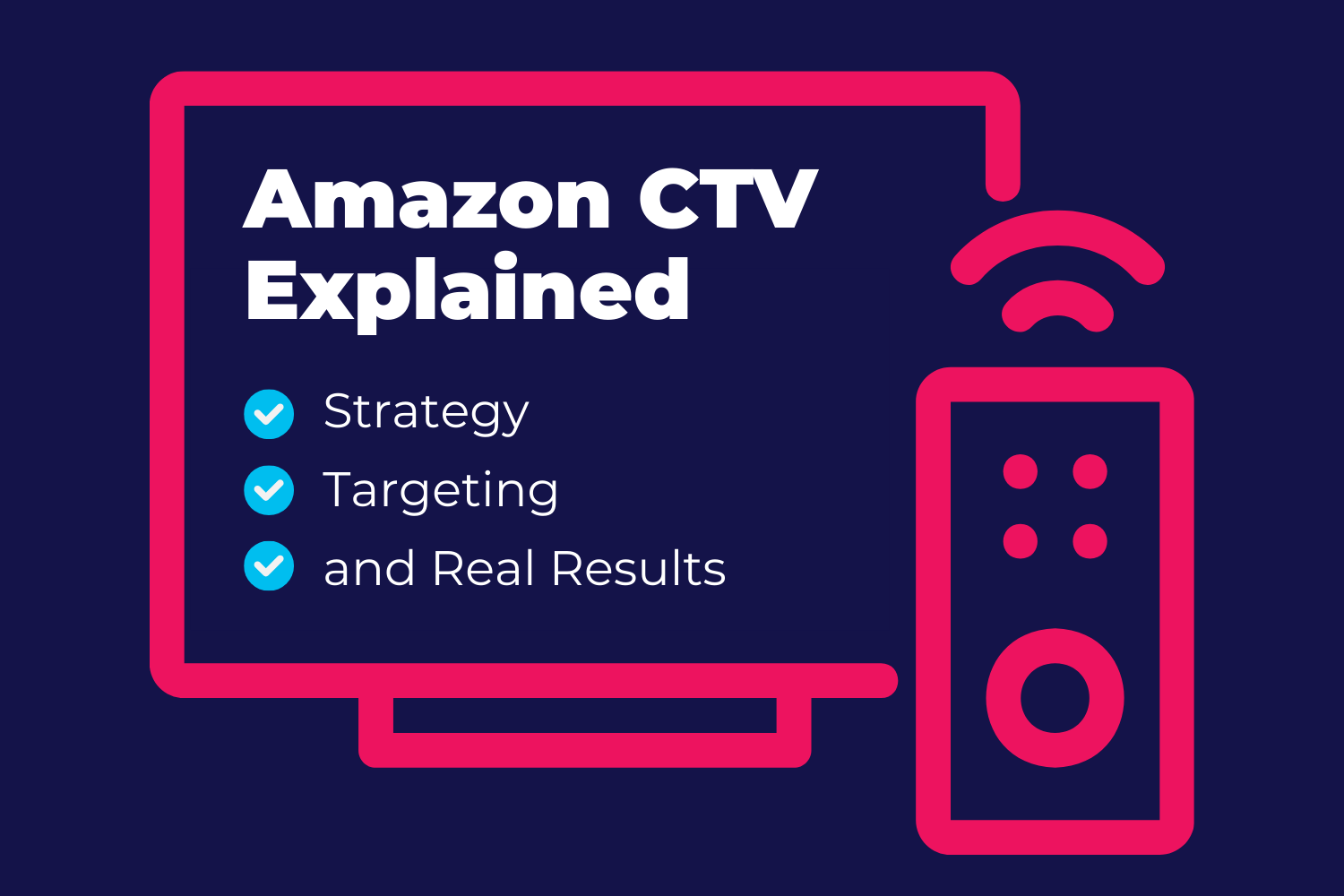Mastering Geo-Targeted Marketing: A Guide for Marketing Pros
| Pathlabs Marketing |
| January 16, 2024 |
Although geo-targeting is not a new concept, it has yet to lose its importance in the world of digital advertising and marketing.
In this blog, we discuss geo-targeting in the context of running paid digital media campaigns and how to utilize this approach effectively.
What Is Geo-Targeted Marketing?
Geo-targeted marketing refers to directing advertising and marketing efforts to users within a specific geographic area or based on their location.
Advertising and marketing teams have always used geo-targeting. In traditional advertising, they intentionally ran ads in newspapers, billboards, and radio shows within the geographic areas where their target audience generally resided.
Nowadays, geo-targeting is more flexible and mostly comes into play when running paid digital media campaigns using platforms like Google Ads, DV360, StackAdapt, and The Trade Desk.
When teams build their campaigns in-platform, they can indicate the geographic area their ads will target. Upon launching the campaign, users online who fall into the defined geographic area or physically enter into it are eligible for ad targeting.
Almost every platform and technology used for display, native, paid social, paid search, online video, OTT/CTV, and definitely DOOH advertising has geo-targeting capabilities.
More importantly, every campaign will have some degree of geo-targeting, whether targeting ads to a small college campus or an entire country.
Advantages for Businesses
The primary advantage of geo-targeting is it ensures the ad campaign only serves ads within the geographic areas where the target audience resides or will take action.
This benefits brands that only offer services or products within a specific geographic area. They can use geo-targeting to set boundaries limiting where their ads appear so they don’t waste ad spend.
Meanwhile, those that serve several geographic areas can run multiple campaigns, personalizing each to its corresponding geo-targeted area to promote better user engagement.
Benefits for Consumers
Geo-targeting benefits consumers, as they see ads based on their geographic location. This generally leads to a better user experience since the ad content is more relevant and actionable.
To illustrate, if the user lives in Montana, they will primarily see ads for businesses and brands nearby or that offer products and services in the state.
Therefore, when the user sees an ad for a local business, restaurant, or University, they can more easily go to it and convert.
Not all brands need to target users within a narrow geographic area; some may only need to target users within the United States. In this case, geo-targeting still benefits potential users, as they may see ads for services and products not commonly promoted in their immediate area, albeit still of personal interest to them.
The Basics of Geo-Targeted Marketing
Types of Geo-Targeting
Advertising and media teams can employ geo-targeting in their paid digital media efforts in a few ways.
Geographic Area Targeting
This is the most common form of geo-targeting used in ad platforms. Teams specify a given geographic area, such as a zip code, city, state, or country. When the campaign launches, users identified within the area are eligible to be served a targeted ad.
Radius Targeting
This method is also common with ad platforms. Teams set a specific geographic point, and then users identified within a given radius of the point become eligible to be served a targeted ad.
Keyword and Search-Based Geo-Targeting
For paid search campaigns, teams can implement geo-targeting with a few tactics.
Their campaigns can bid on both location-specific and non-location-specific keywords and phrases. The team can additionally define a geographic area for the campaign to overall target.
So, a campaign could be set to bid on users who reside in the geographic area of Montana and search either a location-specific phrase, like ‘carpenters in Missoula,’ or a non-location-specific phrase, like ‘custom wood carpenters.’
A key feature with paid search campaigns in Google Ads is the presence and interest setting.
If the campaign just mentioned is set at ‘presence and interest,’ it will target users who live in Montana or have expressed interest in the state based on past search behavior.
If it is set at ‘presence,’ only users living in Montana are eligible for ad targeting.
This setting, often forgotten, has a crucial impact on campaign performance.
Geofencing
GeoFencing is a more unique and location-based form of geo-targeting, not widely used in digital media advertising, but worth mentioning.
This method involves creating a virtual fence around a geographic area within an ad platform. Then, when the platform detects a user entering or leaving the area, it targets them with an ad.
Brands with physical store locations most often employ this method to generate footfall traffic. They set the digital geofence, then when users enter or exit it, the ad platform sends them a promotion-specific ad, usually to their mobile device.
This method hinges on the idea that the brand can send a mobile ad in real-time when a user is near the store. Upon seeing the ad, the user will immediately divert their course, go to the store, and convert. The actual effectiveness of this method can vary.
How Does AdTech Identify User Geo?
There are many ways in which advertising technology can identify a user's physical location. The primary method is to look at the user’s IP address, GPS data, Wi-fi connection, or mobile network. There are additional third-party data providers and services to assist with building audiences and targeting users based on geo.
Often, publishers and larger companies that sell ad space to advertisers, such as Meta, Google, Hulu, LinkedIn, and The New York Times, have an easier time discerning user geographic location.
This is because they offer or require users to make an account and provide their location to access content. Then, as the user logs in across devices, the platform can track them and serve geo-targeted ads accordingly.
Overcoming Challenges in Geo-Targeted Advertising
Recognize the Technical Hurdles
The most prevalent challenge with geo-targeting is its accuracy, which often depends on the platform used for campaign execution.
Some platforms are accurate, while others guess the user’s location or associate it with a nearby area. For example, a user may see an ad for a brand in an adjacent city or state. In this case, the ad is somewhat geographically relevant to the user. However, it may not be close enough for the user to take action easily.
Some teams can get away with this if they are casting a wider geographic net. However, those who want to reach a single geographical area narrowly may not fully capture their audience correctly.
Remember, Geo-Targeting Is Only a Piece of the Puzzle
Simply targeting users based on geographic area or within a given radius alone does not guarantee the success of a campaign.
Take, for instance, a campaign aimed to recruit users for a baroque art history class in Chicago. Targeting a few Chicago zip codes is ineffective, as this geographic area encompasses hundreds to thousands of people, with the majority having little interest in the topic.
To ensure campaign effectiveness and budget maximization, the targeting strategy needs to be more comprehensive, weighing other factors like user demographic, browsing interests, device, time of day, in addition to geography.
This applies to all types of campaigns.
Implementing an Effective Geo-Targeted Marketing Strategy
Choose the Right Geographic Areas
Choosing the right geographic areas to target is not as straightforward as it seems. Base this decision on the brand's service area, understanding of the target audience persona, and the campaign’s focus within the sales funnel.
A best practice can be to explore generating demand at the top of the funnel by setting a wide geographic area or radius for the campaign. As the location data comes in, narrow subsequent campaign efforts to the most high-performing areas, pushing users down the funnel to convert.
Utilize Geo-targeting Technologies
Most advertising platforms offer geo-targeting functionalities. Use them, unless location is absolutely irrelevant to the campaign (very uncommon).
As new geo-targeting technologies come about, like geofencing and beacons, thoroughly assess their viability and accuracy before adoption. A new complex tool will not be the lynchpin for campaign success, but rather, holistic and well-balanced media execution.
Review Data and Analytics
Always set and analyze performance metrics and goals before, during, and after a campaign. These insights help understand the audience’s location, how they interact with the campaign, and what to optimize.
Leverage Personalization
If running multiple campaigns across geographic areas, personalize the ad content of each to fit its corresponding target area. For instance, an outdoor clothing brand might use trendier language and feature lightweight clothing in ads targeted at desert-region audiences. In contrast, the same campaign could highlight heavy-weight apparel with a different language for the Rocky Mountain region.
Leverage Testing
Experiment with geo-targeting scope, like expanding or narrowing the geographic reach or comparing the effectiveness of multiple geo-targeted campaigns against a broader, single campaign.
Optimize Landing Pages for Local Searches
Ensure the geographic target area, ad language, and landing page content are in sync. If different geo-targeted campaigns link to the same generic landing page, it could confuse users. This also facilitates more accurate tracking and attribution.
Use Exclusions, When Necessary
Use an exclusion list or function to blacklist any geographic areas the campaign should not serve ads to.
A go-to example to illustrate is if a team ran a campaign in Washington D.C.. They may exclude Washington State from the list so the ad platform doesn’t accidentally target users on the other side of the country.
The Future of Geo-targeting in Marketing and Advertising
The future of geo-targeting in marketing and advertising remains promising. Still, it will continue to face ongoing complexities regarding data privacy and regulations.
Advertisers want to reach users in certain geographic areas. Users want to see ads relevant to their locale. Publishers wish users to have a positive user experience.
User geo-tracking and targeting help make this happen. However, at the end of the day, a user’s geographical location is sensitive information.
As our industry sees more shifts towards user data privacy, predominantly driven by cookie deprecation, forthcoming regulations may limit the geo data we can actually track.
If geo-tracking and targeting go away, advertisers will have to shift to new methods of identifying user geographic location, most likely with an opt-in model or other tech.
As the industry navigates this reality, it will be interesting to see how the pendulum shifts in user sentiment toward being more or less open to geo-targeted ads.
In Conclusion…
Geo-targeting is a very important strategy for advertisers and marketers. In the world of running digital media campaigns, geo-targeting involves setting parameters within advertising platforms, enabling the campaign to target users in specific geographic areas.
Teams can use several strategies, including targeting based on general geographic areas, radii, keywords, or geofences.
As we progress, geo-targeting's importance in providing specificity in advertising campaigns will continue to grow. However, challenges such as precision, data tracking, and evolving regulations will shape its future application and effectiveness.











